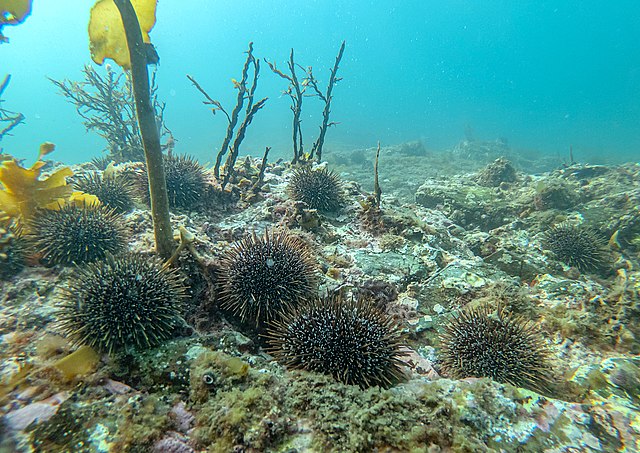Fisheries New Zealand has introduced two proposals to tackle kina barrens on the North East coast of Aotearoa.
Kina barrens are areas where the spiky sea urchins have grazed through kelp forests and taken over the bare or low productivity reefs that remain.
The proposals include changes the recreational daily bag limits for kina, and a special permit to enable the removal of sea urchins for the management or prevention of barrens.
Minister for Oceans and Fisheries, Shane Jones, is holding a community hui in Northland today to discuss how to deal with kina barrens. Consultations on the proposals close on 20 May.
The SMC asked experts to comment.
Dr Kelsey Miller and Associate Professor Nick Shears, Leigh Marine Laboratory, University of Auckland, comment:
“We support Fisheries New Zealand in their efforts to understand and manage kina barrens, but note the two proposed measures address the symptom by actively managing kina numbers rather than addressing the cause of kina barrens: overfishing of kina predators like crayfish and snapper.
“Nevertheless, active kina control can be a useful part of kelp restoration efforts. A new special permit purpose-specific to restoration will support individuals, communities, and hapu looking to restore kelp in kina barrens. However, as kina are taonga and of commercial value, we support requirements for engagement, and development of a removal plan and monitoring prior to removal activities.
“For kelp to recover, kina densities must be reduced below ~1 kina/m2, regardless of removal method (harvest or culling). To be effective, kina removals must be systematic on large areas to prevent kina from returning, so specifically designed special permits would be the most effective strategy to ensure restoration goals are met.
“Increasing recreational catch limits has limited potential for reducing kina barren extent as harvest from barrens is unlikely given the poor quality of these kina as kai and the large effort required to achieve desired density reductions on meaningful scales.
“While kina removal is extremely effective in rapidly restoring kelp, we want to emphasise that removing kina does not address the underlying cause of high kina densities, and therefore is not a solution on its own.”
Conflict of interest: Dr Miller has no conflicts of interest – she receives funding from the University of Auckland and Foundation North. Dr Shears has no conflicts of interest – he receives funding from Live Ocean, Sustainable Seas, and Foundation North.
Dr Christopher Cornwall, Lecturer in Marine Biology, School of Biological Sciences, Victoria University of Wellington, comments:
“Changing the recreational bag limit will have limited to no consequences for the creation of sea urchin barrens. Kina numbers need to be reduced down to below 1 per meter square to have any ability to reverse kina barrens back to kelp forest states.
“We know from research conducted in Aotearoa New Zealand and abroad that reducing fishing pressure on sea urchin predators such as lobster and snapper is the best way to prevent the formation of sea urchin barrens.
“It requires far fewer kina to be present in an area to cause a sea urchin barren to return to the kelp forest state than the numbers of kina it takes for a kelp forest to form into a sea urchin barren in the first place.
“Thus, prevention is theoretically easier than restoration, but does not always work in reality. Physical removal of kina using the special permit could work: however, this needs to be done in collaboration with local mana whenua, remembering that kina are taonga and cannot be just removed without collaboration with mana whenua. My take is that rahui by mana whenua would be the best tool to use, in conjunction with management of kina predators and in some cases kina themselves if needed.”
Conflict of interest: I am the co-director of the Centre for Biodiversity, and Restoration Ecology and a Theme Leader in the Centre of Research Excellence Coastal People; Southern Skies.
